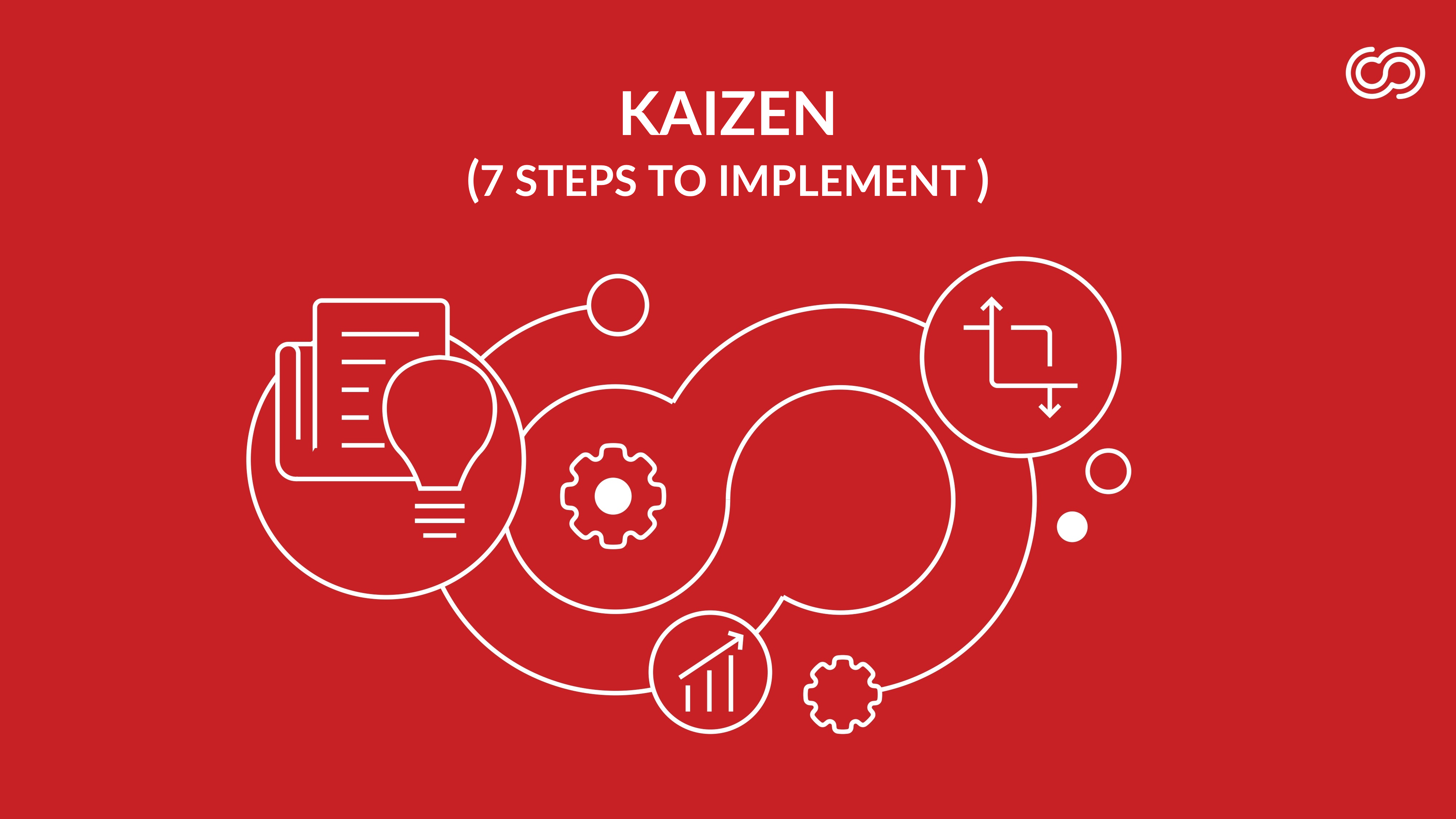
Implementing Kaizen with 7 Proven Steps: Kaizen Success
29th Jan, 2024
In the dynamic landscape of today’s business environment, organizations are consistently seeking ways to enhance their processes and increase productivity. One effective approach to achieving this is through the implementation of Kaizen, a Japanese term that means “continuous improvement.” Kaizen focuses on making small incremental changes to processes, systems, and practices to drive overall improvement. In this blog, we embark on a comprehensive exploration, unravelling seven essential steps to seamlessly integrate Kaizen and cultivate a culture of perpetual improvement within your organization. This journey aims not only for immediate efficiency gains but also for the establishment of a transformative mindset that propels continuous improvement at every level of your business.
.
What is Kaizen?
Kaizen is a Japanese idea about Continuous Improvement. The word “Kaizen” comes from two Japanese words: “kai,” which means change, and “zen,” which means good. It started in the factories, especially at Toyota, but now it’s a way of thinking that helps in many different jobs. This idea encourages making small, regular improvements instead of big changes. It’s about always getting a little better. Initially used in manufacturing, especially at Toyota, Kaizen has become a versatile approach applicable to various fields.
Kaizen promotes steady progress through small, manageable changes, breaking away from the idea of making big improvements all at once. Kaizen focuses on efficiency and quality, creating a culture of ongoing improvement. Beyond its roots in manufacturing, Kaizen’s practical and universal application makes it a guiding philosophy for continuous growth and enhancement.
.
A Brief History of Kaizen
Kaizen, originating in post-World War II Japan, is a transformative concept rooted in the need for economic recovery. The term, combining “kai” for change and “zen” for good, gained prominence through Toyota’s innovative manufacturing practices. It introduced a paradigm shift by advocating continuous, incremental changes over large-scale transformations, emphasizing efficiency, quality, and sustained progress. Initially confined to manufacturing, Kaizen’s success at Toyota propelled its widespread adoption across diverse industries. Over time, it transcended borders, finding applications in healthcare, education, and services. Kaizen’s history showcases its evolution from a post-war recovery tool to a universal philosophy guiding individuals and organizations toward continuous improvement and excellence.
.
Implementing Steps of Kaizen
Step 1: Establish a Clear Vision and Goals:
Before embarking on any improvement initiative, it is crucial to define a clear vision and set specific goals. This involves identifying the areas in need of improvement and aligning them with the overall organizational objectives. By doing so, you ensure that everyone involved understands the purpose and direction of the Kaizen implementation.
Step 2: Create a Kaizen Team:
Building a dedicated Kaizen team is essential for the successful implementation of continuous improvement. This team should consist of individuals from different departments or areas of expertise, each bringing unique perspectives and insights. By having a diverse team, you can ensure a holistic approach to problem-solving and generate innovative ideas.
Step 3: Educate and Train Employees:
To cultivate a culture of continuous improvement, it is essential to educate and train employees on the principles of Kaizen. Conduct workshops, seminars, and training programs to familiarize them with the concepts and methodologies of Kaizen. This will empower employees to take ownership of improvement initiatives and contribute to the organization’s success.
Step 4: Identify and Analyze Processes:
The next step is to identify and analyze key processes within your organization. This involves mapping out the current processes, identifying bottlenecks, and areas of inefficiency. Utilize tools such as value stream mapping, process flow diagrams, and data analysis to gain a comprehensive understanding of the existing processes and their shortcomings.
Step 5: Implement Small-Scale Improvements:
Kaizen emphasizes making small, incremental improvements rather than large-scale changes. Encourage your Kaizen team and employees to identify and implement small improvements that can lead to significant results over time. This could include streamlining workflows, reducing waste, improving communication channels, or implementing standardized procedures. By focusing on small-scale improvements, you create a continuous cycle of learning and progress.
Step 6: Measure and Track Progress:
To ensure the effectiveness of your Kaizen implementation, it is crucial to measure and track progress. Establish key performance indicators (KPIs) and regularly monitor them to assess the impact of the implemented improvements. This data-driven approach will help you identify trends, patterns, and areas that require further attention and refinement.
Step 7: Sustain and Celebrate Success:
The final step in implementing Kaizen is to sustain the improvements and celebrate the successes achieved. Embed the culture of continuous improvement into your organization’s DNA by encouraging open communication, rewarding innovative ideas, and recognizing employees’ contributions. Regularly review and update your processes to ensure they remain agile and adaptable to changing market dynamics.
.
Benefits Of Implementing These Kaizen 7 Steps
Having explored the intricate steps of implementing Kaizen, it’s now time to unravel the substantial benefits that accompany this strategic approach to continuous improvement. Adopting Kaizen is not merely about refining processes; it introduces a spectrum of advantages that contribute to a more efficient and dynamic organizational environment.
- Enhanced Efficiency and Productivity
- Improved Employee Engagement
- Cross-Functional Collaboration
- Data-Driven Decision Making
- Adaptability to Market Changes
- Cultivation of a Continuous Improvement Culture
- Enhanced Customer Satisfaction
- Cost Savings
- Long-Term Organizational Success
In today’s business environment, integrating Kaizen is a powerful tool for continuous improvement. The seven steps provide organizations with a clear framework for enhancing performance, from setting goals to celebrating achievements. Kaizen goes beyond problem-solving, incorporating streamlined workflows, team engagement, and adaptability to change. Positive aspects like increased efficiency, heightened employee engagement, and informed decision-making seamlessly become part of daily work life. Embracing Kaizen is a purposeful journey toward propelling organizations to exceptional competence in the ever-changing dynamics of the business world.
.
How 4C can facilitate the implementation of Kaizen in your organization?
4C takes a leading role in aiding organizations to implement Kaizen, offering a range of benefits to enhance your operations. Our specialized Kaizen training and consulting services are customized to address the unique needs of companies, ensuring your team is well-equipped to excel in incorporating Kaizen principles. Boasting over 15+ years of experience across various sectors, we have a proven track record of guiding organizations in understanding and effectively implementing Kaizen methodologies. Let 4C be your trusted partner in steering your company through the 7 steps to implement Kaizen. Contact us now for a journey towards operational excellence.
